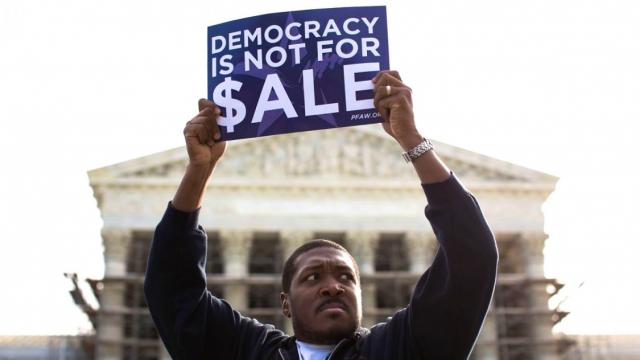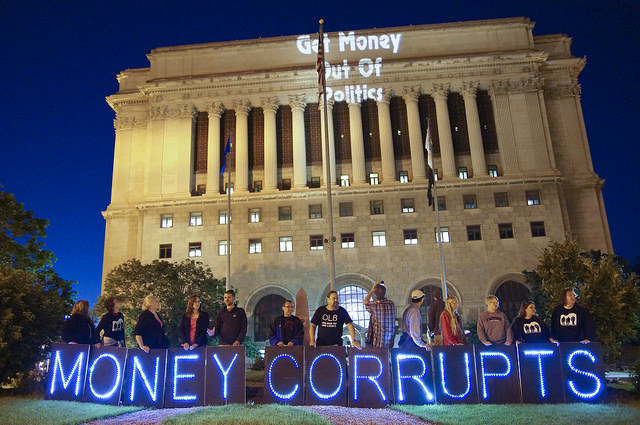
Over the last few years, political scientists have warned about a worrying trend in American democracy: Voter preferences don’t have much sway over presidents’ policy choices. New research suggests their worries are well founded.
In a new book, "Who Governs? Presidents, Public Opinion, and Manipulation, political scientists James Druckman and Lawrence Jacobs examine data on internal polling from U.S. presidential archives and other existing research to determine how presidents use their knowledge of public opinion to craft policies.
What they found is disturbing: Presidents tend to focus on the opinions of the wealthy and well-connected insiders, ignoring the views of most of the electorate. This turns on its head the idea that elected officials in the United States are responsive to public opinion.
Druckman and Jacobs focused on how President Ronald Reagan created the modern conservative coalition using internal polling. He sought to unite political independents, high-income groups, social conservatives and economic conservatives. While all these groups had influence over the Reagan administration, high earners had the most pull.
A look at how frequently the administration gathered public opinion data on specific groups is even more revealing. The authors noted, “The Reagan team assembled little data on the middle- and lower-income groups as it focused intently on gathering information on the affluent.”
In total, Reagan received cross-tabulations for the rich about 60 percent of the time, compared with only 32 percent for low-income people. And 84 percent of the information gathered on economic issues included data on the affluent, compared with only 24 percent examining the middle class and 36 percent on the poor. On Social Security, for example, Reagan never received cross-tabulations on the opinions of the poor or middle class.
“We’ve got essentially the smoking gun,” Jacobs said. “We’re inside the White House and able to use Reagan’s own data and memos to cinch this case.”
The Effect of a 10% Swing in Public Opinion on Reagan’s Policies
Jacobs and Druckman’s research is especially important to growing concerns about inequality. In a 2006 study in the Oxford Review of Economic Policy journal, political scientists Thomas Cusack, Torben Iversen and Philipp Rehm found that those in the highest income quartile are 18 points more likely to “strongly disagree” with government redistribution
Based on data from the American National Election Studies, I find a similar result: While those earning less than $25,000 are in favor of redistribution, those earning more than $150,000 are strongly opposed, with 62.6 percent saying government should not redistribute. The more influence high earners have on policy, the less likely inequality will be addressed through redistributive policies.
Government Should Take Measures to Reduce Differences in Income Levels
Why do the rich have so much more influence? Donors to political campaigns, who tend to be rich, have stronger influence over policy. Granted, there is strong overlap in preferences between donors and nondonors in the same party. To test whether the donors had more influence, political scientists Michael Jay Barber, Brandice Canes-Wrone and Sharece Tower zeroed in on issues where co-partisan donors and nondonors disagreed. They found that donors exert more influence on presidential positions, while nondonors, even those of the same party, have no significant effect. Barber found a similar effect in the Senate.
The outsize influence of the wealthy donor class may also show up in Congress’ polarization. In a 2010 study Darmouth University researchers found “a lack of congruence between American voters and members of Congress.” One explanation could be that donors, who are more extreme than nondonors, are behind most policy decisions.
While the researchers did not establish a clear causal relationship, they found that donors are better represented than nondonors. As Barber has shown, those with a net worth above $10 million make up 0.01 percent of Americans but 18 percent of political donors. By contrast, those worth less than $250,000 make up 69 percent of Americans and only 8 percent of donors.
The outsize influence of the wealthy also shows up in the priorities politicians give to competing policy agendas. In a recent study, political scientists William Franko and Patrick Flavin examined how policymakers respond to political priorities rather than to constituent preferences. Unsurprisingly, the researchers found that the rich and poor have different priorities and that policymakers are more attentive to the priorities of the wealthy. As shown in the chart below, the priorities are even more divergent on class issues such as the minimum wage and poverty.
High- and Low-income Earners have Different Priorities
Evidence continues to accumulate that the U.S. is fast becoming a plutocracy. Americans must fight to take back their democracy. One way to do that is by bolstering voter turnout. Voters who want more progressive policies should look at a recent research by Jonas Pontusson and David Rueda. “Left parties will respond to an increase in inequality only when low-income voters are mobilized,” they wrote, on the basis of their analysis of data from 10 countries over nearly 40 years. Limiting the influence of money in the political process would also improve representation.
For its part, the middle class needs organizations that push policies that benefit them. Unions could serve such a role by mobilizing the working class and advocating for policies that benefit workers. “Labor unions promote greater political equality primarily by mobilizing their working class members to political action,” according to Flavin. “States with higher levels of union membership weigh citizens’ opinions more equally in the policymaking process.”
Without some such dramatic action, economic disparity will continue to solidify political inequality, which will further entrench racial and class gaps.
3 WAYS TO SHOW YOUR SUPPORT
- Log in to post comments














